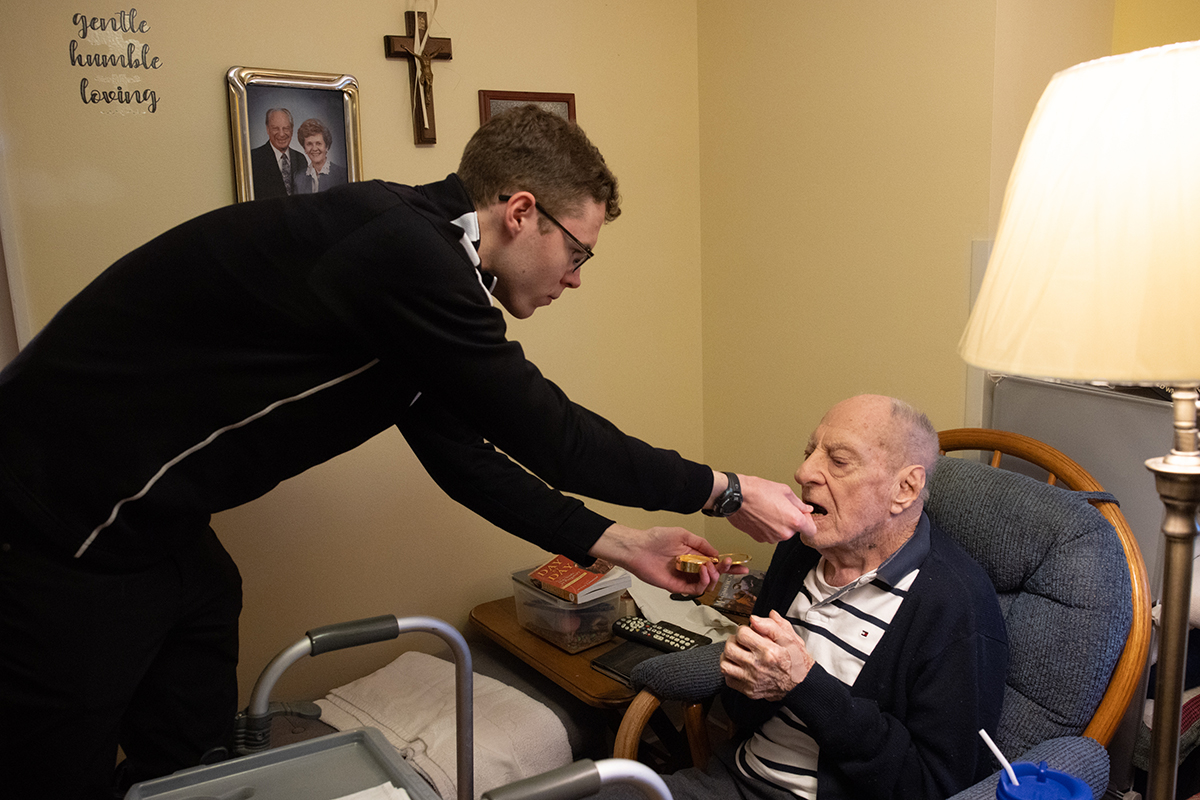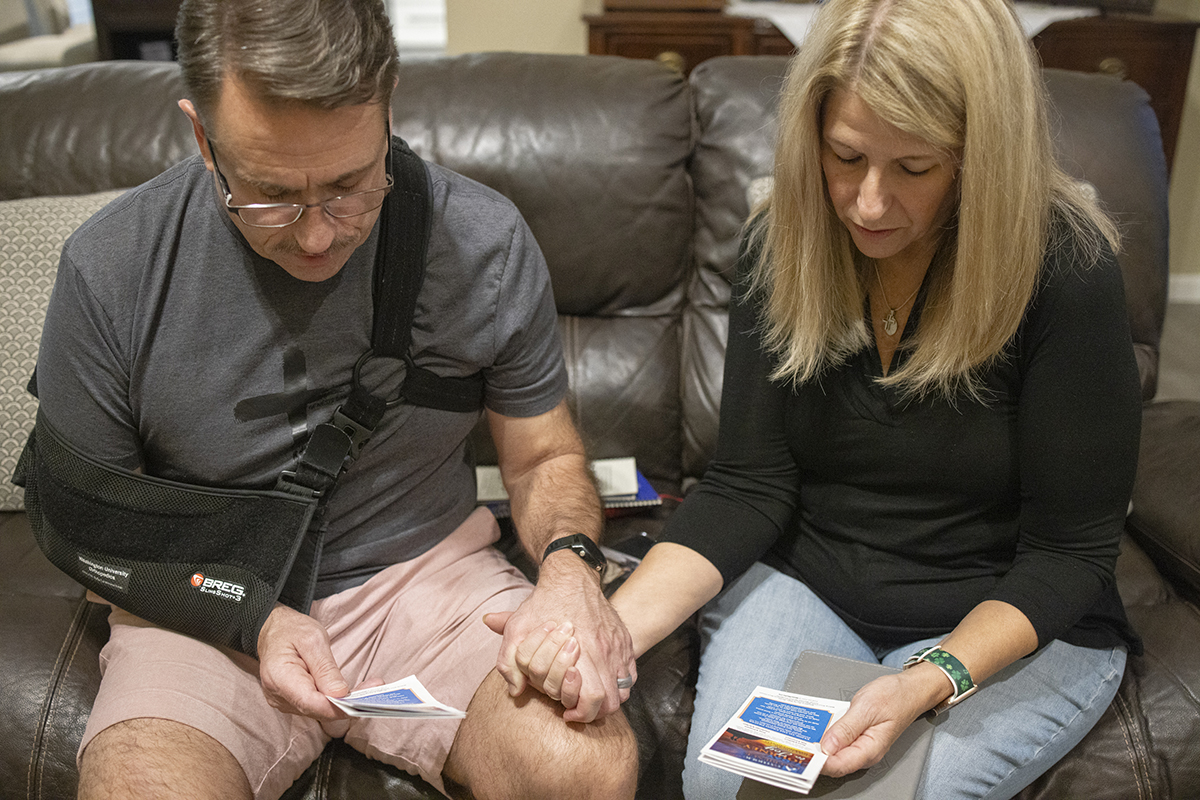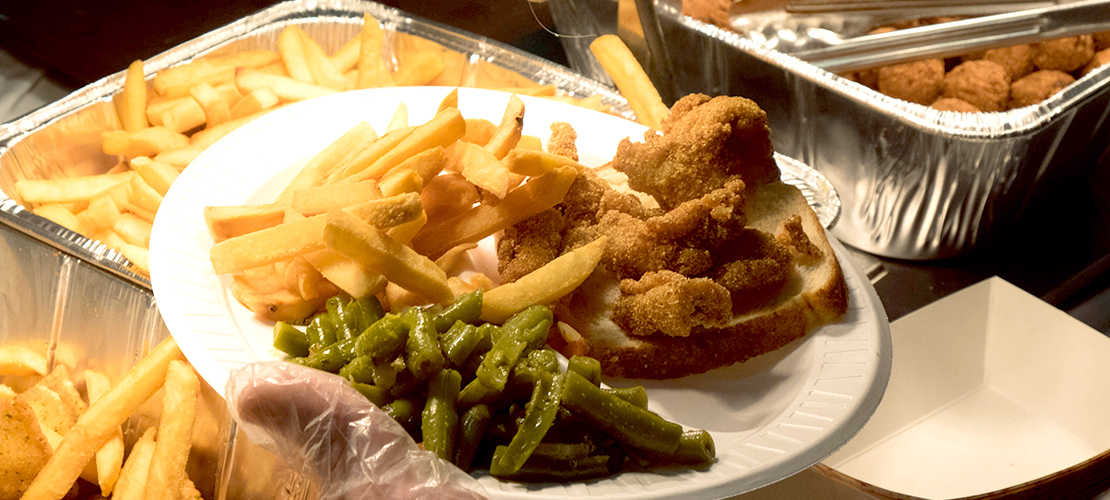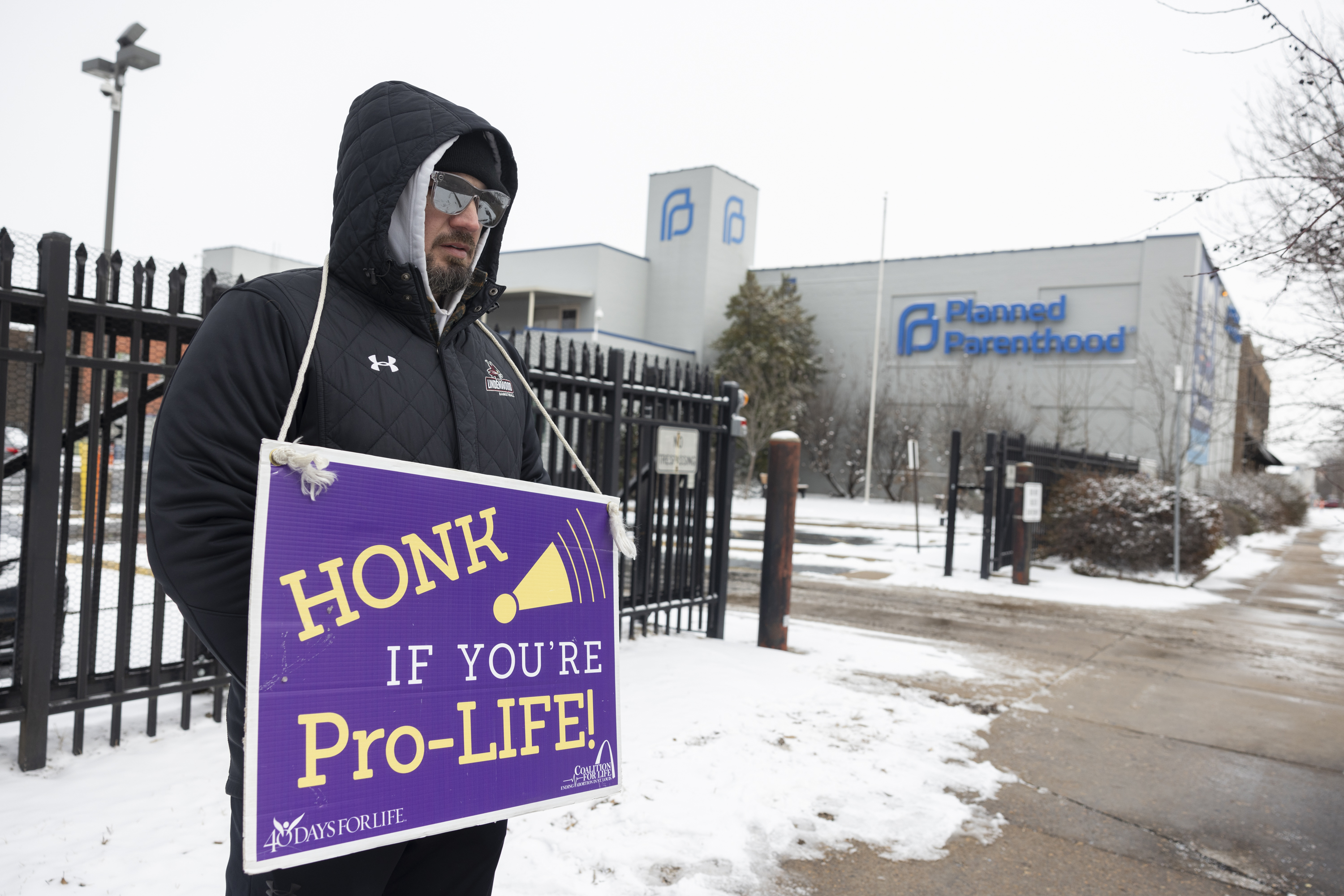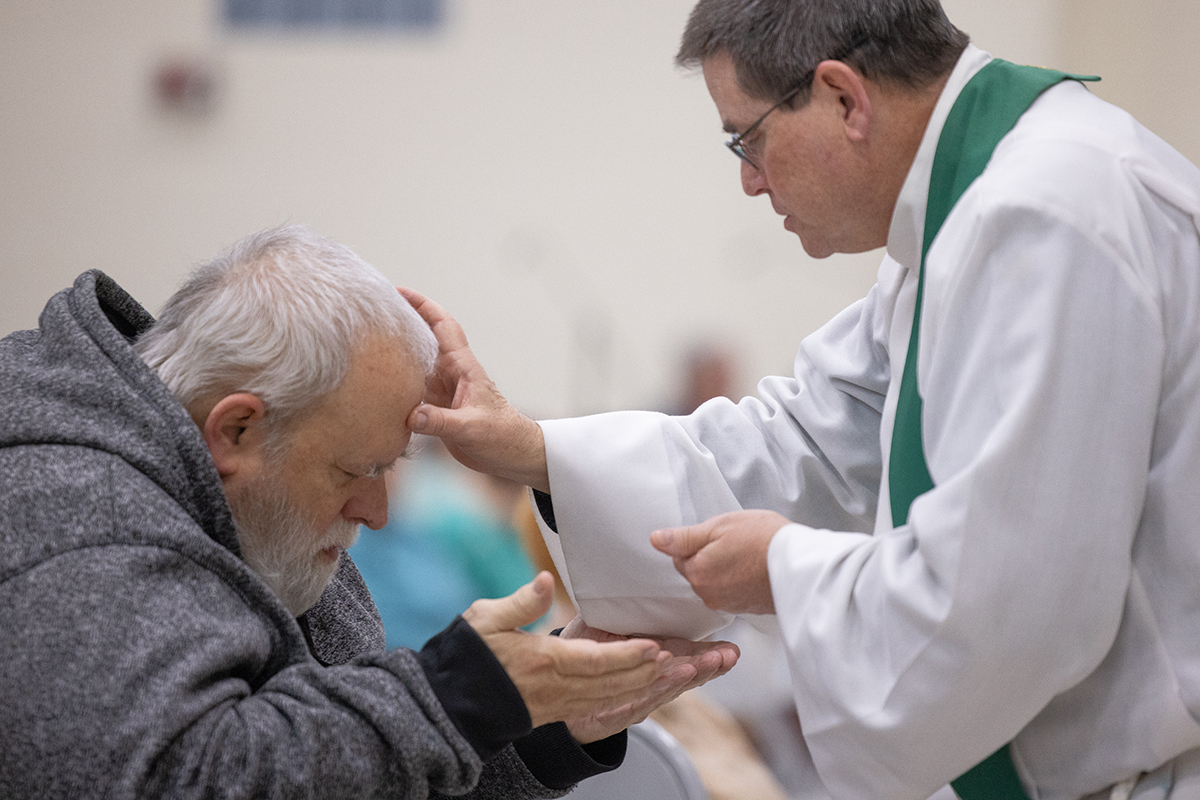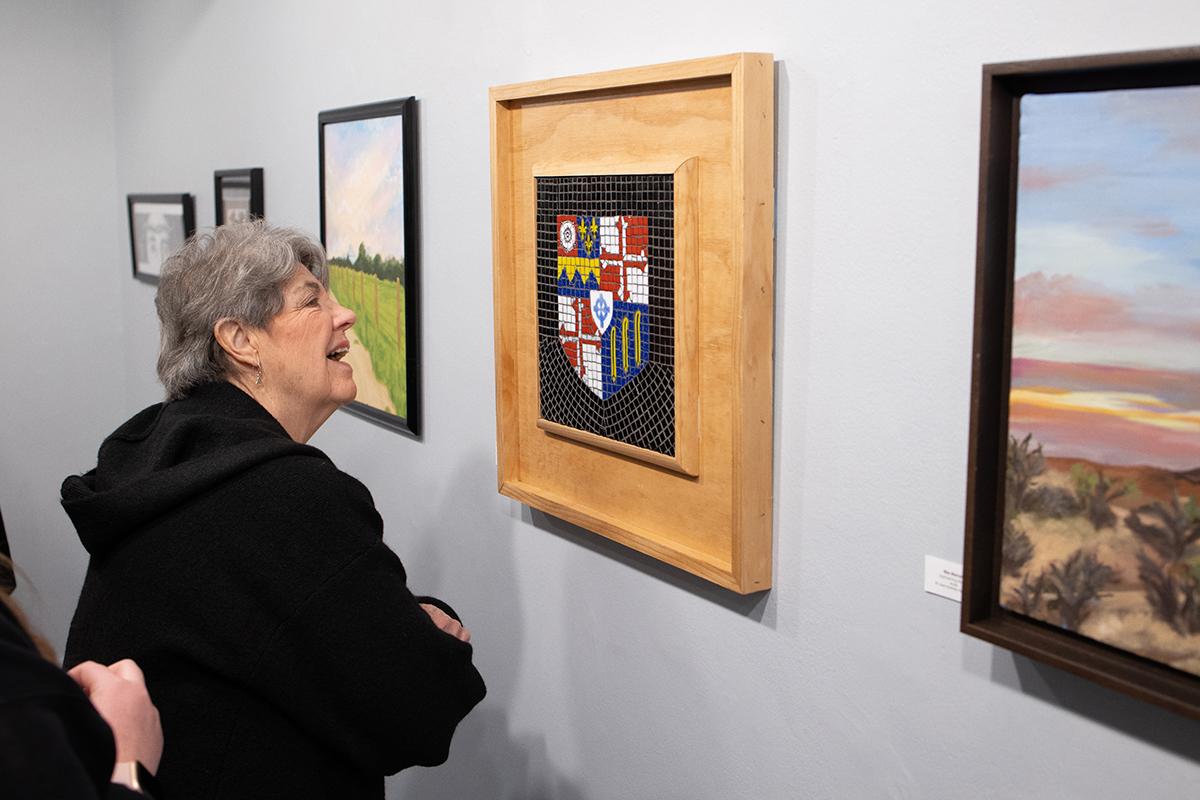Seven priests ordained for the Archdiocese of St. Louis
A sense of wonder and awe filled the Cathedral Basilica of Saint Louis as seven men were ordained for the sacred priesthood May 25.
A standing-room-only congregation witnessed Fathers Andrew Auer, Samuel Inameti, Mark Madden, Tony Ritter, Patrick Russell, George Staley and Stephen Schumacher as they were welcomed into the fraternity of priests in the Archdiocese of St. Louis.
Archbishop Robert J. Carlson, who conferred the sacrament of Holy Orders, reminded the seven of the words of St. Polycarp, who said that “a priest must stand at the altar in such a way that the people do not see him, but they see Christ.”
The priests promised to serve as “in persona Christi” not just in their obedience, but also by worthily living out the office of the priesthood through teaching the faith, faithfully celebrating the sacraments, sharing God’s mercy with the people entrusted to their care, and above all, to become more united with Christ every day of their lives.
In the homily, the archbishop teared up as he told them: “May the Eucharist you celebrate always fill you with wonder and awe, immense gratitude and love — a living icon — as Christ passes through your hands, and your voice and your heart.”
The priestly ministry is “painstakingly and prayerfully painted, with each stroke expressing something of the mystery of God and His saving love as you absolve us from our sins and break open the Word and make the Eucharist present,” he said.
The priesthood is an invitation to walk a path of holiness, a model of integrity that never seeks privilege, Archbishop Carlson added. It’s also an invitation to rediscover through prayer a priest’s relationship with Christ.
“At the heart of any priest’s ministry must be a living relationship with Christ so that you begin to see as Christ sees and love as Christ loves,” he said.
Rite of ordination
At the beginning of the rite of ordination, Father James Mason, president-rector of Kenrick-Glennon Seminary, stood before the archbishop and testified to the candidates’ worthiness for ordination. Afterward, the candidates declared their willingness to undertake the responsibilities of the priesthood, as well as obedience to the archbishop and his successors.
One of the highlights of the rite is the Litany of Supplication, also known as the Litany of Saints, in which the men lie prostrate on the floor of the sanctuary, and the congregation prays for the intercession of the saints for God’s grace and mercy for those to be ordained.
The archbishop also imposes hands on the head of each ordinand, conferring the power of the Holy Spirit through a prayer of consecration. All priests at the Mass also take turns laying hands on these candidates, symbolizing the they are being ordained into the presbyteral college of the local Church. The archbishop then says the prayer of ordination, asking for each man to be configured to the person of Christ.
Afterward, the new priests are invested with the stole and chasuble, the vestments of the priest. The archbishop anoints the hands of each man with the sacred chrism oil, which symbolizes the priest’s participation in the priesthood of Christ through the sacrifices of his hands.
Shouts of joy
It’s not uncommon for new priests to have some jitters before ordination. As they vested in the rectory of the cathedral basilica, the seven chatted as they joked about the proper placement of their vestments. But as they processed across the walkway toward the mother church, any visible sense of nervousness seemed to slip away as Mass began.
For the next two-and-a-half hours, a standing-room only crowd prayed along as they witnessed the ordination. For many, it was emotional — not just for family and friends, but also other Catholic St. Louisans who got to know them during their parish assignments as seminarians. Their approval was apparent as applause gave way to shouts of joy as the newly ordained processed down the aisle at the end of Mass.
Before their ordination, the seven reflected on different themes of the priesthood and how God has called them to this vocation:
Father Samuel Inameti
A priest is a man of joy, sacrifice and above all, a man of mercy, Father Samuel Inameti said. Sharing the joy of our redeeming Lord ultimately is what drew him to the priesthood, said the 35-year-old and native of Cross River State in southern Nigeria.
He’s witnessed many hardships among priests in Nigeria, including traveling great distances, sometimes to hostile areas, to minister to others. All of it is done with a deep love for Christ and His people.
Father Mark Madden
Father Mark’s Madden foundation of service started well before his time in the seminary. In college at the University of Missouri-Rolla, he served as an officer in his fraternity and was a designated driver for other students who had too much to drink. Later as an engineer, he mentored colleagues.
“Whoever came to talk to me, I tried to help them to the best of my ability and help them grow in understanding,” said Father Madden, 39.
Father Patrick Russell
In high school, Father Russell had a radical encounter with God’s love, which in turn made him realize God’s love for him, propelling a vocation to the priesthood.
Since then, he’s experienced ways in which God is loving others through him. He recalled a tragic death at a parish several years ago, where he was assigned as a seminarian.
“Being able to just be there … in the midst of their suffering, just loving them through that,” said the 27-year-old. “If I could show people the taste of God’s love the way that God has showed that to me, then that’s what being a priest is all about.”
Serving others by loving them well is what calls Father Russell to the priesthood.
Father George Staley
As a youngster, Father Staley, like many students, sometimes struggled in his schoolwork. In a particular moment of frustration with a sixth-grade English lesson, he hastily thought about the prospect of going to the seminary one day, because there, “school won’t matter.”
After nine years of post-high school education, the 26-year-old looks back and laughs. In his youthful mind, the only thing the priest did was celebrate Mass and hear confessions — obviously, there’s much more to that, including years of study and formation. But it certainly drew attention to a central part of the priesthood — the sacraments. “That aspect of sacramentality was so linked to what the priesthood was,” he said.
There’s also an aspect to the mystery of God’s call to the priesthood, he said. That call is from the Lord — not just him wanting to please someone else. He added that his priesthood will be rooted in developing a relationship with Christ, through a solid prayer life.
Father Tony Ritter
The priesthood is an opportunity to journey with people as they encounter Christ in their lives, said Father Ritter, 25. It’s important that people encounter Christ on earth but ultimately builds upon something that will least for eternity.
He has an older sister who is a professed religious with a cloistered community in California. In his past year as a transitional deacon, he often would send her prayer requests for people he’d encountered in his ministry. As a priest, he’s looking forward to involving her even more in that ministry.
Father Andrew Auer
For generations, Christ has called generations of men to the priesthood to work for the salvation of souls, said Father Auer, 25.
It’s a reality that means there is something to lose. “The priest has to be some sort of light in the darkness. He has to provide hope to people,” and hopefully, seminary formation has given them the tools to be able to show people the light.
As a junior in high school, Father Auer described being anxious about knowing what his next step in life would be — what college, what career, and what girl he would marry. But as he began to deepen his prayer life with God, he recognized a calling to the vocation of priesthood. “I was open to what the Lord wanted to do in my life,” he said. “As soon as I started to pray in a real way … that’s when Christ really started calling me.”
Father Stephen Schumacher
Like many young Catholics, Father Schumacher went to Mass every Sunday with his parents. Later he began to attend daily Mass; about two years ago, he realized there wasn’t a moment where he hadn’t gone to Mass on a given day.
“It was so normal, so natural to go to Mass,” said the 29-year old, “which is a great gift. Complementing that is confession, which he said “roots out the weeds,” while the Eucharist served as the “nourishment of the Christian life.”

